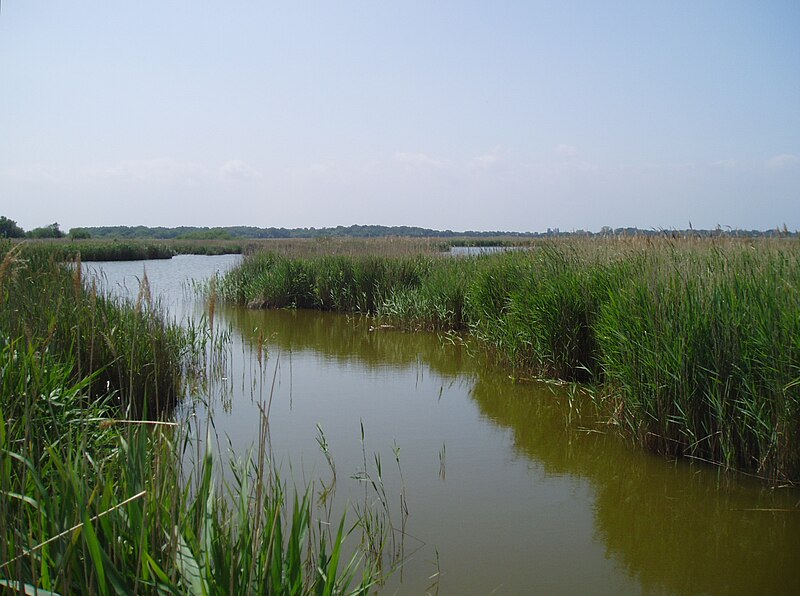Based on the novel by L. P. Hartley and with a screenplay by Harold Pinter, the 1971 film The Go-Between starring Julie Christie and Alan Bates, which triumphed at the Cannes Film Festival, tells the story of a doomed love affair between Marian (Christie), the daughter of a wealthy family, and a neighbour Ted Burgess (Bates), during Marian’s engagement to viscount Hugh Trimingham (Edward Fox). Marian’s younger brother brings his friend Leo to stay at the family home, Brandham Hall, and Marian takes a shine to Leo, recruiting him as a go-between to pass messages to her secret lover.
The part of Brandham Hall is played by Melton Constable Hall in the Norfolk village of Melton Constable. The property, built around 1670, was for seven centuries the home of the Astley family. It is surrounded by extensive parkland, which also features heavily in the film. More recently the Hall has been in private hands, and sadly has become somewhat dilapidated. Last year a castellated former watch tower in the grounds of the Hall came up for sale in what was described as a “rare opportunity”. The village of Melton Constable, which was once at the hub of a number of railway lines, lies around 7 miles south-west of Holt, just inland from the popular North Norfolk coast.
 |
| Melton Constable Hall. Image taken from Morris's Country Seats, via Wikimedia Commons. |
In a scene vaguely reminiscent of the famous “lake scene” in
the 1995 TV production of Pride and Prejudice, the fragrant ladies and
gentlemen of Brandham Hall arrive at a lake on a hot day to find an interloper
cooling off in the water. The bather
turns out to be Ted Burgess, who is seen emerging from the water dripping wet
and resplendent in his 19-century bathing costume. This scene was filmed at Hickling Broad, the
largest of the Norfolk Broads and protected by the Norfolk Wildlife Trust. The Broad, which has moorings available, is
located just inland roughly midway between Great Yarmouth and Cromer.
Norwich plays a starring role in a sequence in which Marian takes Leo to the city for the day to buy him something cool to wear in the hot weather. During the visit, Leo is packed off to explore the cathedral, and we are treated to views of both the magnificent exterior and the impressive interior. The city’s imposing railway station also puts in an appearance, with its elaborate red brick and stucco arched facade topped with a dome and clock.
The cathedral was begun in 1096 and has the second largest cloisters in England, as well as the second tallest spire. The architecture is a mix of Norman and English Gothic. The station building was built in 1886 and designed by William Ashbee, to form part of the Yarmouth & Norwich Railway, the earliest railway in the county.
As for the village scenes, these were principally filmed in the village of Heydon, to the north-west of Aylsham. The Church of St Peter and St Paul, with its tall grey tower, is where the older Leo is seen walking in the graveyard. Marian’s cottage, which is where Leo is asked to pass on one last message, is at the edge of the village green. However, the cricket scene was filmed in the village of Thornage, in the Glaven Valley, a short distance to the south-west of Holt. Heydon is a period film-maker’s dream, being a conservation area with no new buildings added since the 1887 Queen Victoria commemorative well. Thornage used to have a brass and iron foundry in the 19th century, and though now gone, its memory lives on in the village sign.
Map of Norfolk.
 |
| Hickling Broad. Photo by Andrew Lowe Watson, via Wikimedia Commons. |
Norwich plays a starring role in a sequence in which Marian takes Leo to the city for the day to buy him something cool to wear in the hot weather. During the visit, Leo is packed off to explore the cathedral, and we are treated to views of both the magnificent exterior and the impressive interior. The city’s imposing railway station also puts in an appearance, with its elaborate red brick and stucco arched facade topped with a dome and clock.
The cathedral was begun in 1096 and has the second largest cloisters in England, as well as the second tallest spire. The architecture is a mix of Norman and English Gothic. The station building was built in 1886 and designed by William Ashbee, to form part of the Yarmouth & Norwich Railway, the earliest railway in the county.
 |
| Norwich Cathedral, Gesamtansicht. Photo by Rensi, via Wikimedia Commons. |
As for the village scenes, these were principally filmed in the village of Heydon, to the north-west of Aylsham. The Church of St Peter and St Paul, with its tall grey tower, is where the older Leo is seen walking in the graveyard. Marian’s cottage, which is where Leo is asked to pass on one last message, is at the edge of the village green. However, the cricket scene was filmed in the village of Thornage, in the Glaven Valley, a short distance to the south-west of Holt. Heydon is a period film-maker’s dream, being a conservation area with no new buildings added since the 1887 Queen Victoria commemorative well. Thornage used to have a brass and iron foundry in the 19th century, and though now gone, its memory lives on in the village sign.
Map of Norfolk.
No comments:
Post a Comment